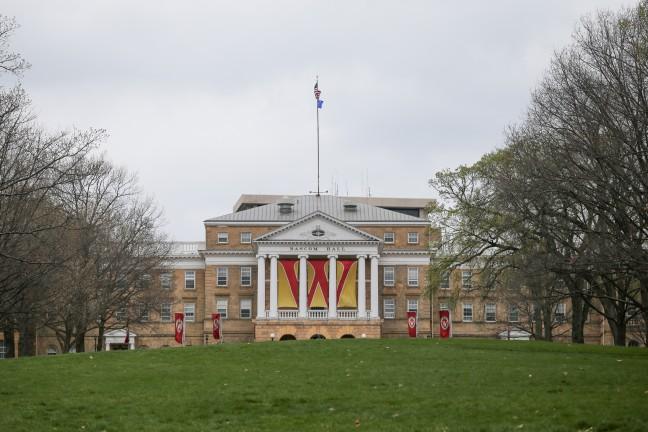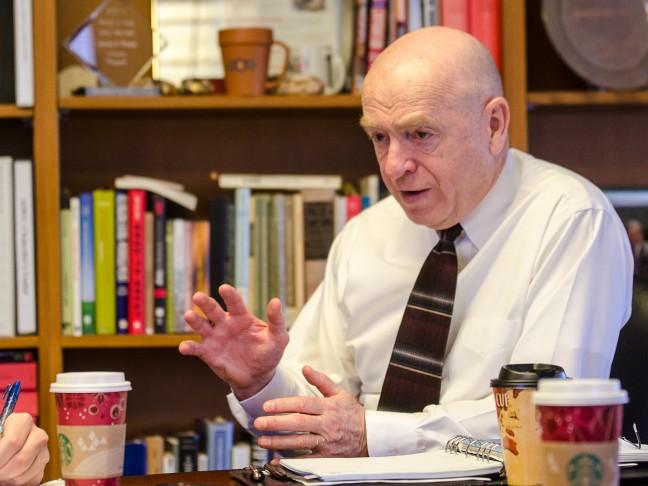What would you do with an additional $83 million?
The University of Wisconsin System Board of Regents answered this question during its August meeting with a requested and incomplete budget, asking the state for an additional $83.6 million for the UW System Growth Agenda.
Whether or not the university gets that money remains to be seen, and will largely depend on who takes over as governor in January 2011.
Climbing Costs to Continue
The budget, as it stands, is incomplete. In addition to the new money requested, the UW System needs to submit a budget with their costs to continue their basic operations. It is possible for the $83.6 million to be funded in full while the costs to continue are slashed.
It is not unheard of to have an incomplete budget, and the final budget should be submitted to the state later in the semester, Giroux said.
Typically, he said, the state funds one quarter of the UW System’s budget per year, which comes out to be approximately $1 billion per year.
There is always the possibility of cuts, Giroux said.
Wisconsin’s Economic Woes
The $83.6 million accounts for “new money” for new initiatives, Giroux said.
Wisconsin Taxpayer Alliance President Todd Berry said he was skeptical as to whether the state would be able to fund any additional budget items, not just for the UW System, but also for all state-funded programs.
“I cannot paint a picture where there is going to be much of any new money,” Berry said.
Berry pointed to the state of the economy. With the size of the deficit Wisconsin faces, it will be hard to meet the need of state agencies, he said.
This does not mean, Berry said, institutions should not make the case for programs they feel are vital.
Regardless, the next governor will inherit economic difficulties in the budgets statewide for the next two years.
“It’s sort of [like] marrying someone with credit card debt. It’s nothing you’ve done,” Berry said.
The UW System Growth Agenda: A Balancing Act
Earlier this year, the Regents heralded their new goal of increasing the amount of degrees granted in the UW System by 80,000 by 2025 as part of their Growth Agenda for Wisconsin.
They now must balance the value of a UW education and its resources with making room for more and more students.
According to the Board of Regents’ report on the biennial budget, the state will support each student with 25 percent less funds in 2012-13 than it did in 2008-09.
Giroux said this is one of the ways the system will see more graduates. This does not necessarily mean there will be tremendous amounts of new students flooding campuses.
More graduates cannot come at the expense of spreading less and less over more and more. Instead, Giroux said the system is looking for the nontraditional students: those who have long since dropped out looking to return, those finishing their degrees online and those who will gain credit from experience gained on their regular jobs.
These types of students, Giroux explained, are inherently inexpensive and do not necessarily have to come to campus to finish their degree.
As state dollars trend downward, tuition trends up
In a letter from Gov. Jim Doyle to state agencies regarding budget policies for this biennium, the governor said increases will be far and few between as Wisconsin’s economy recovers.
While other state agencies should brace themselves for restrained budgets not exceeding previous years, the UW System is one of the exceptions according to the Wisconsin major budget policies for 2011-13, which are included in the Regents’ report.
The UW System’s budget may have dodged stricter scrutiny, but it has been subject to a downward trend in the amount of state funding for decades.
In the early 1970s, the state gave approximately 14 percent of its taxpayers’ dollars to the UW System. Since the new millennium, this percentage has hung in the single digits, according to a Regent report.
With less state funding, the UW System is counting on other sources of funding to stay afloat. This includes tuition and the report foreshadowed increases to come. The requested budget has assumed tuition increases in four-year colleges over the next two years.
According to the Regents’ report, the amount of financial aid requested from the state is tied to “assuming a 5.5 percent increase in tuition each year.”
Despite these tentative increases, the Regents also are hoping to have some sort of tuition amnesty for students from lower and middle-income families. They have requested to grant programs to make sure students do not feel too much of the tuition crunch.
The Tuition Increase Grant, which the Regents created in the last budget, would be increased by more than $10 million in the new budget.
While not part of their budget, the Regents also voted to increase the number of people who receive the Wisconsin Higher Education Grant earlier this year. That grant is federally funded.
The Regents said in a report they are using the 2011-13 biennial budgets as a means to begin the strategies that come with generating more degree holders. The end goal, according to the report, is clear: a more-educated, more philanthropic, healthier Wisconsin.






















